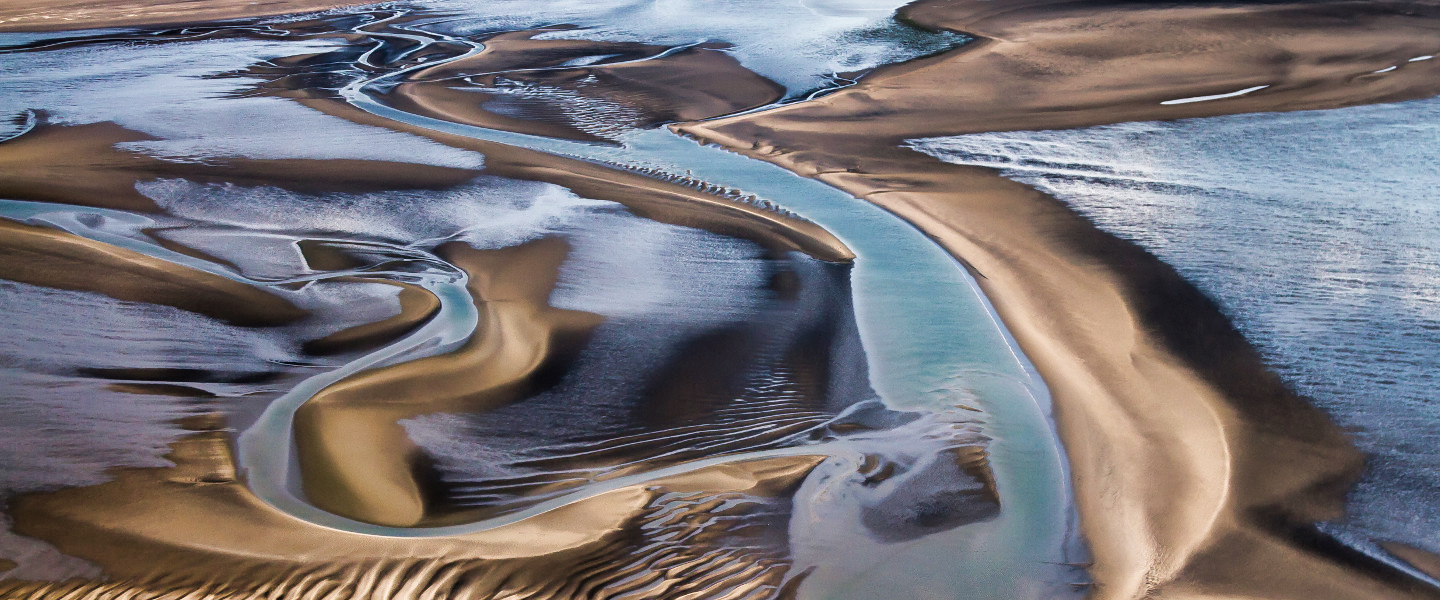Why is the Wadden Sea a World Heritage Site?
The UNESCO defines these as ‘unique natural landscapes’. And further: Like the Cultural World Heritage Site, a Natural World Heritage Site has an exceptional, universal value on a global scale and is therefore not only important locally or nationally, but for all of humanity. Examples of World Heritage Sites are the Grand Canyon in the USA, the Galapagos Islands in the Pacific, the Serengeti in Tanzania, Lake Baikal in Russia, the Great Barrier Reef in Australia. And since 2011 also the Hamburg Wadden Sea National Park.

UNESCO lists 350 major tidal flats worldwide. However, the Wadden Sea on the North Sea coast with a total of 11,500 km² is the largest contiguous sand-silt mudflat on earth. It stretches some 500 km from Esbjerg in Denmark to Den Helder in the Netherlands, and Hamburg’s national park lies almost exactly in the middle.It stretches some 500 km from Esbjerg in Denmark to Den Helder in the Netherlands, and Hamburg’s national park lies almost exactly in the middle.
Nowhere else on earth is there such a varied coastal landscape. It is constantly being shaped by wind and water. Again and again, islands, sandbanks, tideways, channels, mudflats, salt marshes and dunes emerge and disappear. The Wadden Sea is a transitional world between land and sea, subject to constant change due to the ebb and flow of the tide, determined by strong fluctuations in salinity, by high temperatures in summer and sometimes ice in winter.

The result is numerous ecological niches, micro-habitats that sometimes only exist for days or even hours (e.g. small tideways, low sandbanks, break-off edges). In total, the Wadden Sea is said to be home to up to 10,000 species of protozoa, plants, fungi and animals, many of them endangered elsewhere. Biomass production in the Wadden Sea is as high as in the rainforest and provides a rich food base for fish, birds and marine mammals. This makes it a ‘hot spot’ for biodiversity in Germany and northern Europe.
The Wadden Sea is indispensable for the conservation of global biodiversity. Every year in spring and autumn, 10-12 million migratory birds rest here on their way to their summer or winter quarters. Only here in the Wadden Sea do they find enough food for their journeys of thousands of kilometres.

In the Wadden Sea, natural processes still take place almost completely uninfluenced by humans. If you want, you can study evolution here—live. In the Hamburg Wadden Sea National Park around 500 plant species have been recorded so far, 340 bird species, 34 fish species and seals, grey seals and harbour porpoises.